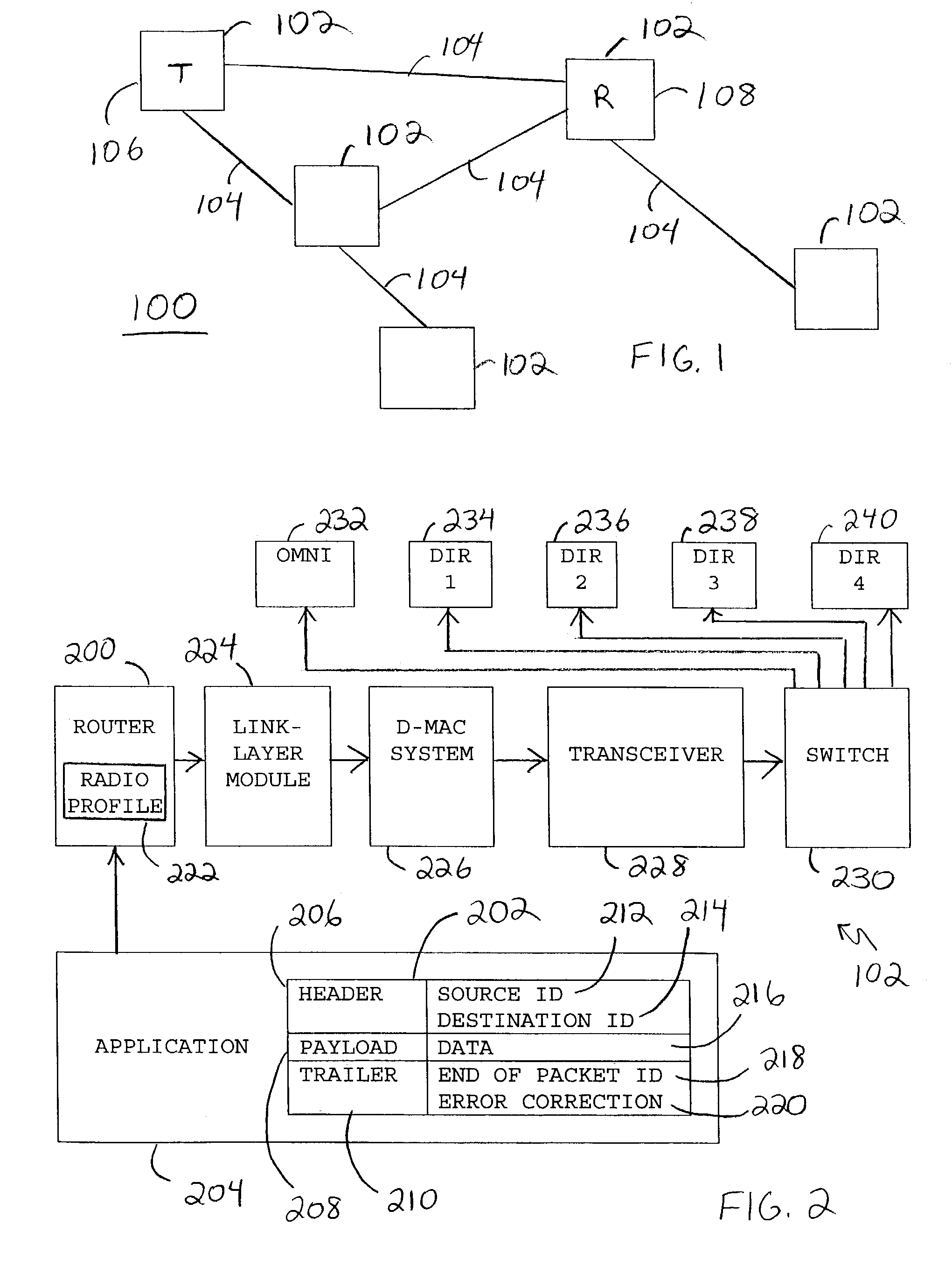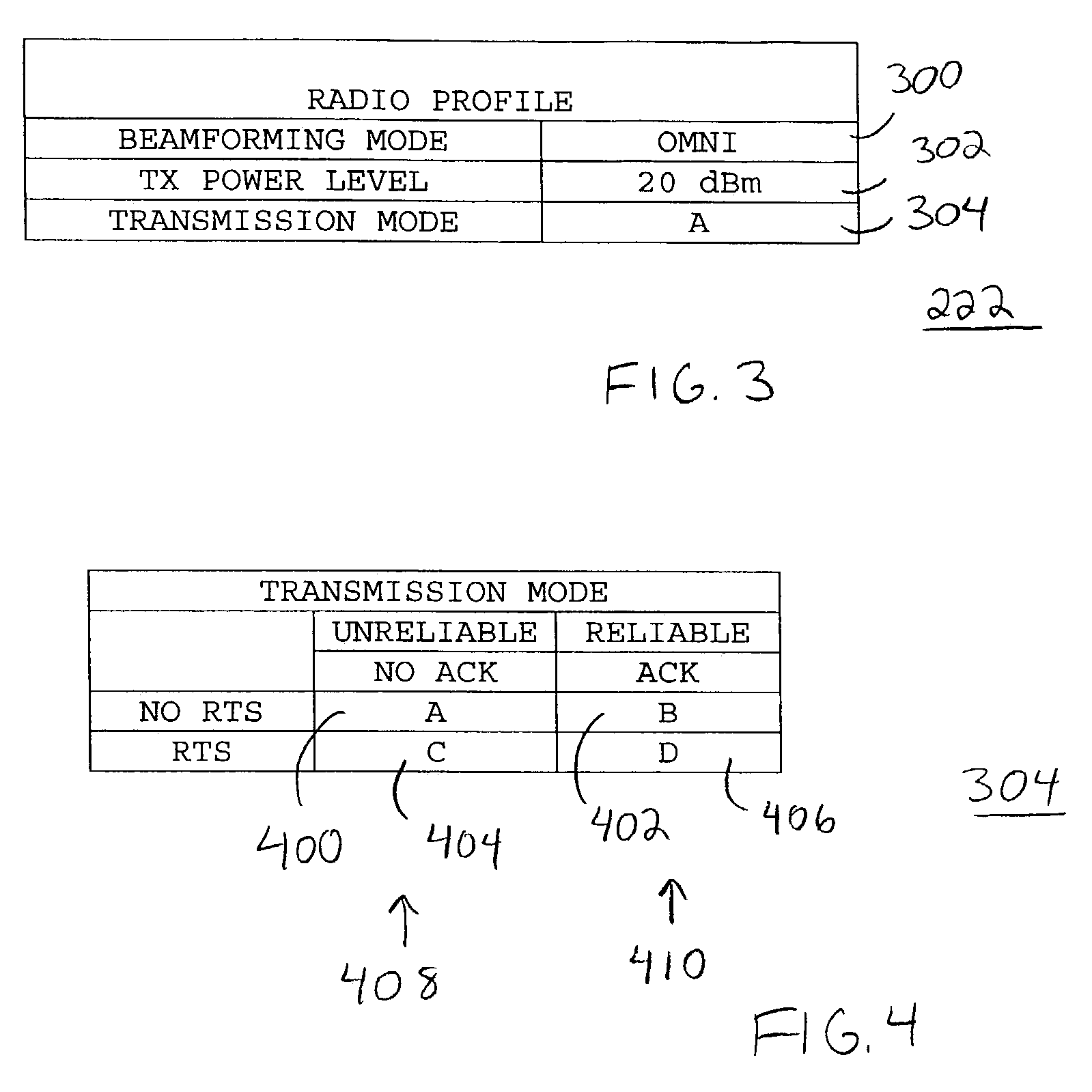Directional carrier sense medium access for wireless nodes
a wireless node and carrier sense technology, applied in the field of wireless communication networks, can solve the problems of multiple antennas, multiple antennas, and the 802.11 mac layer protocol is not capable of switching between multiple antennas in selective communication with a single transceiver, so as to improve network performance in terms of capacity, latency, robustness and security, and prevent packet transmission.
- Summary
- Abstract
- Description
- Claims
- Application Information
AI Technical Summary
Benefits of technology
Problems solved by technology
Method used
Image
Examples
Embodiment Construction
[0038]The present invention controls access to transmission media, i.e., channels or wireless links, within a wireless network of nodes, each equipped with one transceiver and multiple antennas. The invention achieves efficient wireless networking (including peer-to-peer “ad hoc” networking) by controlling the selection of antennas, controlling access to the transmission media, and controlling the transmission power level of a signal.
[0039]Throughout this discussion, items are assigned three- or four-digit reference numbers whose first digit or first two digits reflects the Figure in which the item first appears. That is, items first appearing in FIG. 1 are assigned reference numbers between 100 and 199, items first appearing in FIG. 10 are assigned reference numbers between 1000 and 1099, etc. Once assigned, a given reference number is used in all Figures in which that item appears.
FIG. 1
[0040]FIG. 1 shows a schematic diagram of a wireless network 100 of nodes 102. Nodes 102 may be...
PUM
 Login to View More
Login to View More Abstract
Description
Claims
Application Information
 Login to View More
Login to View More - R&D
- Intellectual Property
- Life Sciences
- Materials
- Tech Scout
- Unparalleled Data Quality
- Higher Quality Content
- 60% Fewer Hallucinations
Browse by: Latest US Patents, China's latest patents, Technical Efficacy Thesaurus, Application Domain, Technology Topic, Popular Technical Reports.
© 2025 PatSnap. All rights reserved.Legal|Privacy policy|Modern Slavery Act Transparency Statement|Sitemap|About US| Contact US: help@patsnap.com



